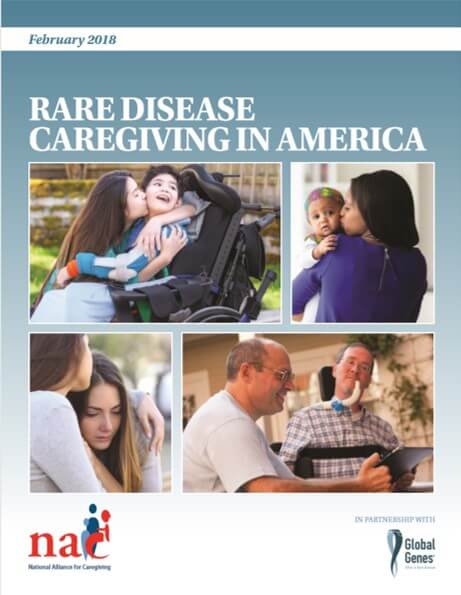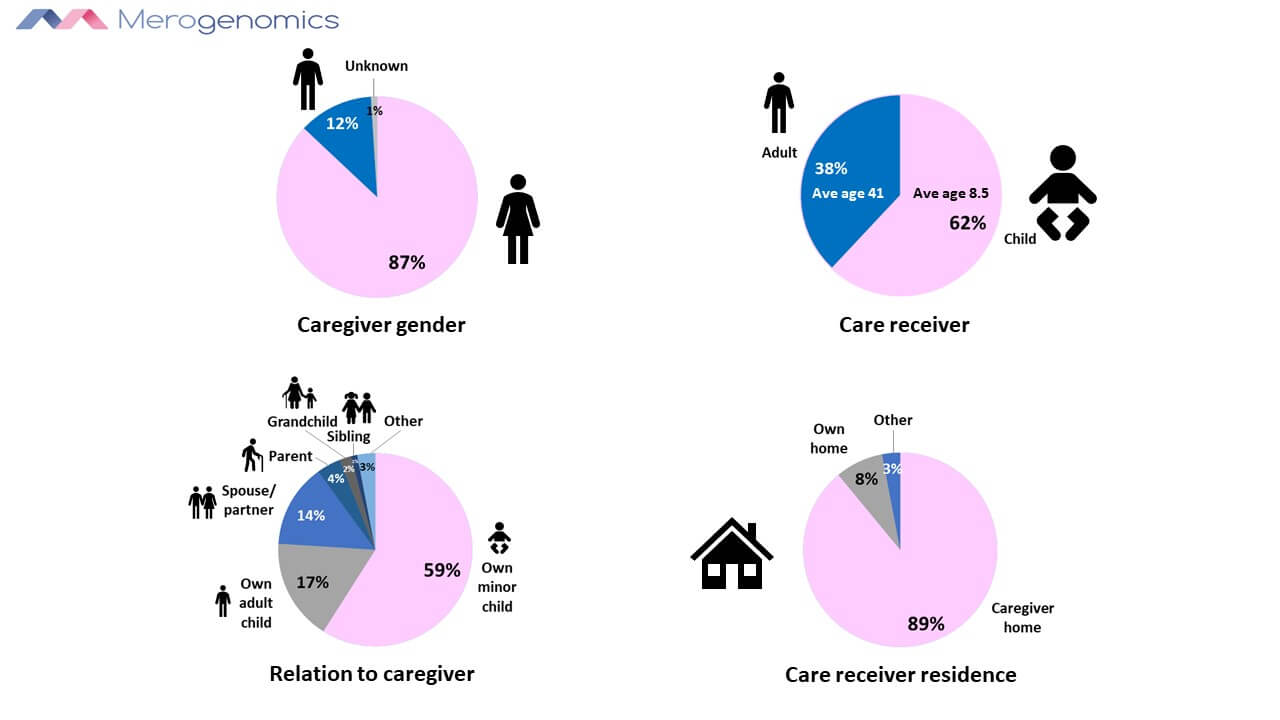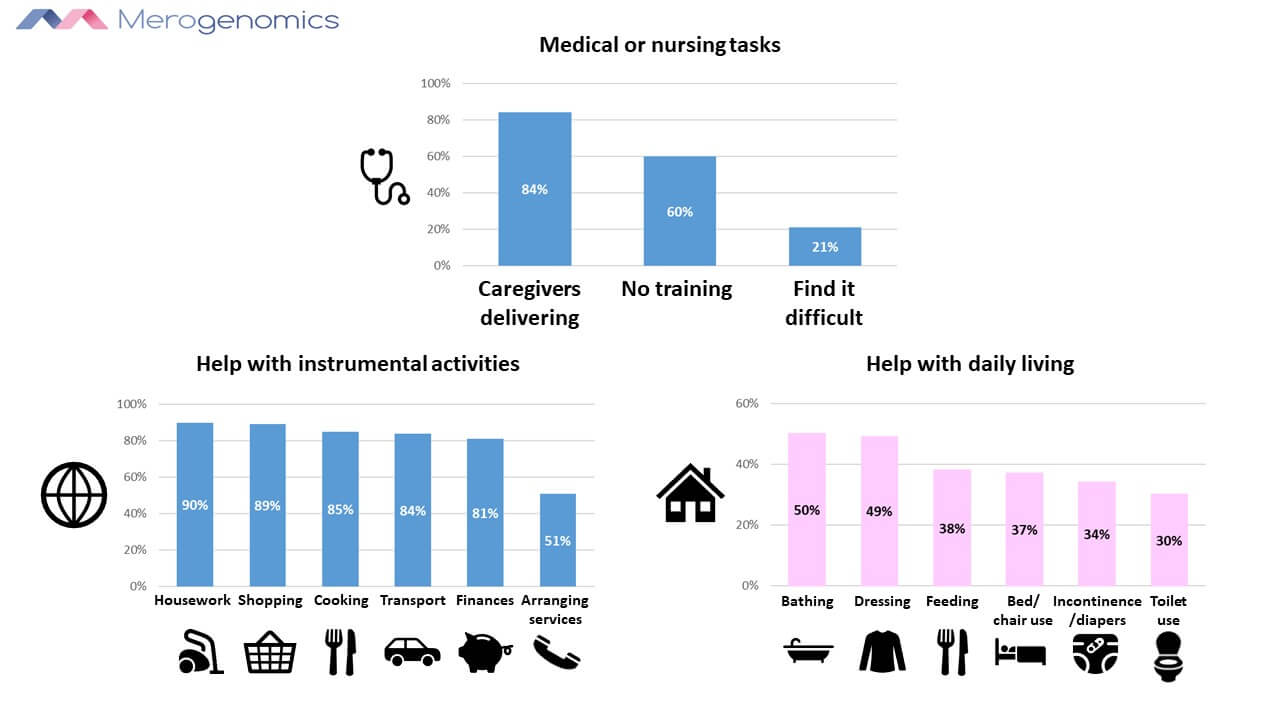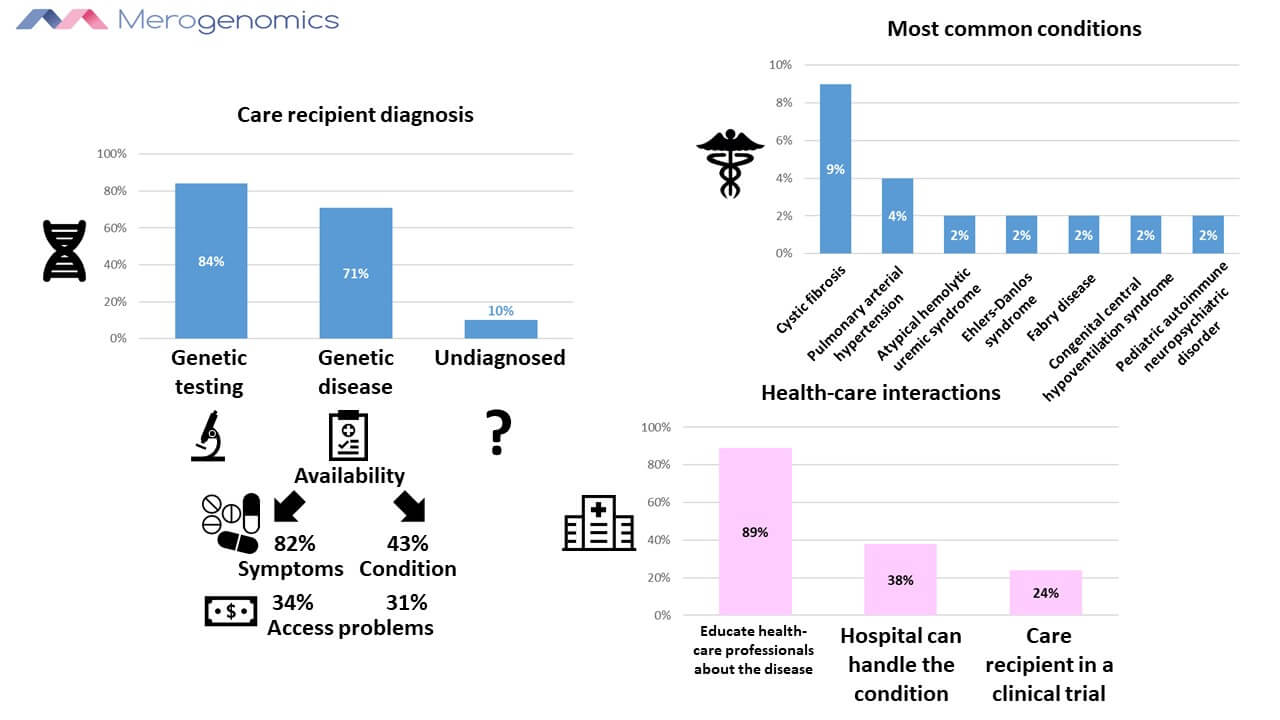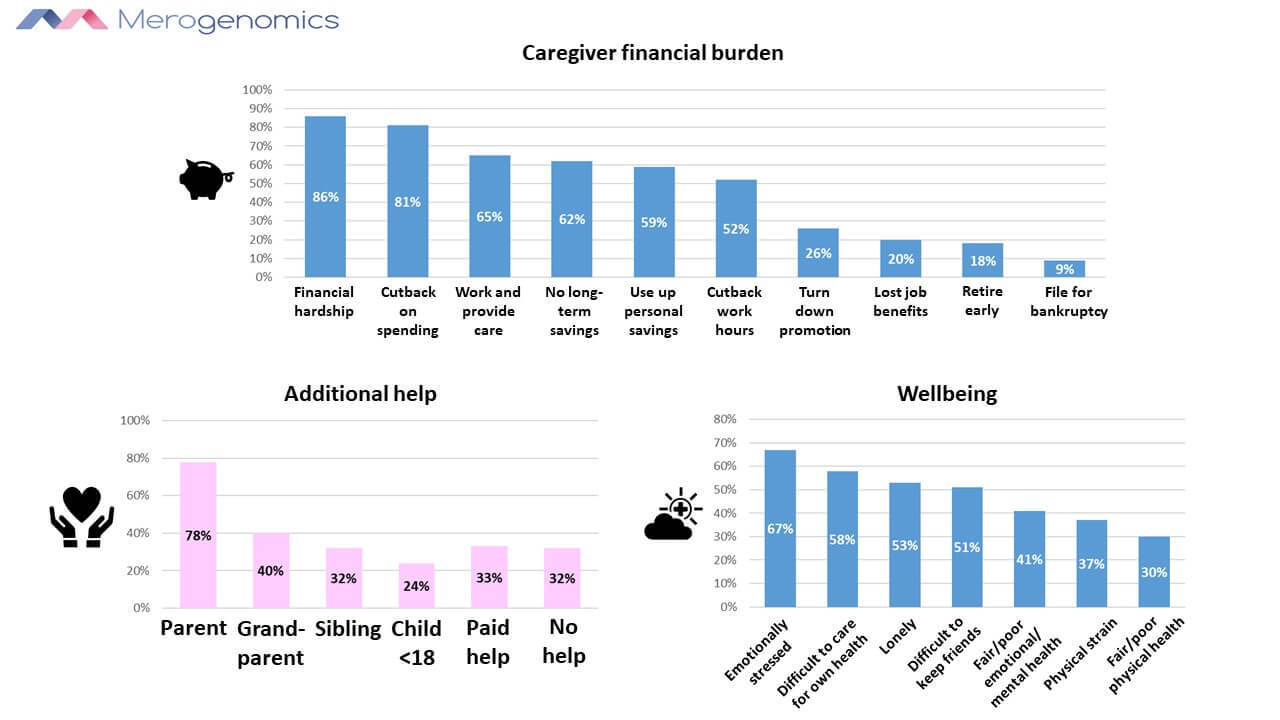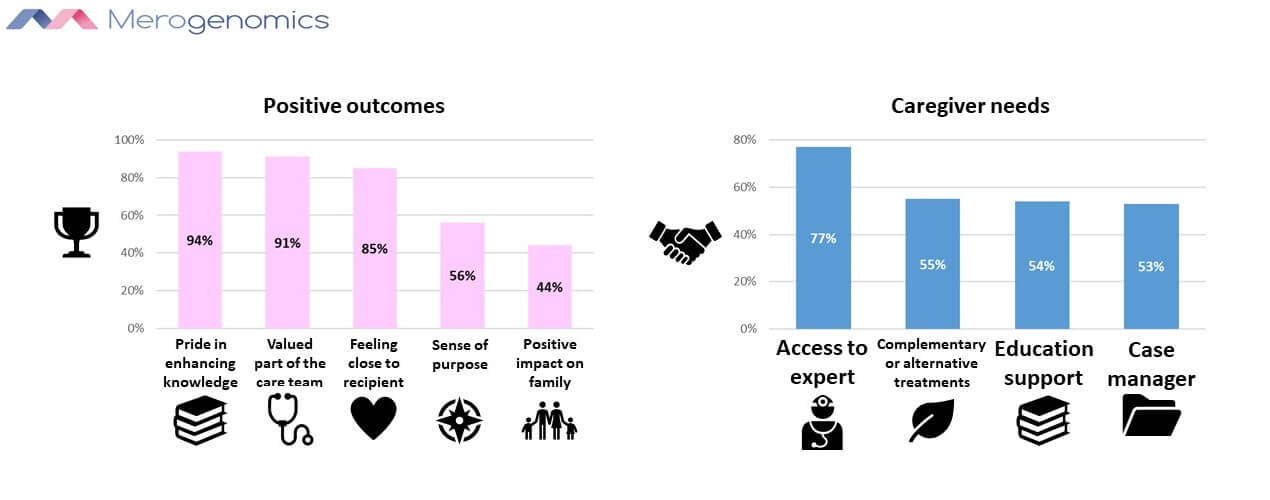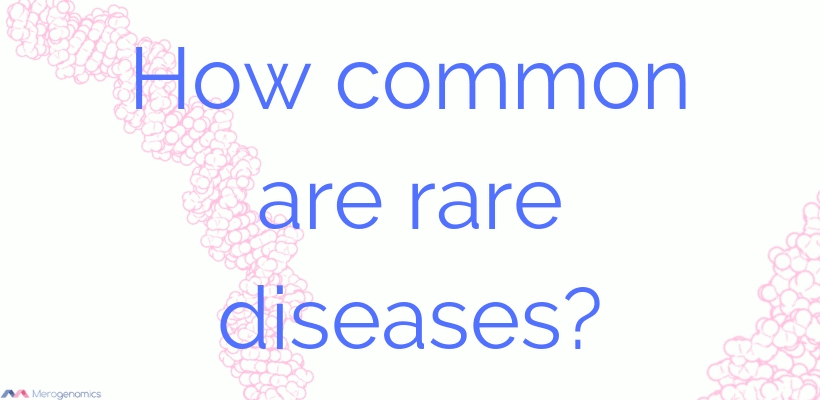
Caregivers of patients with rare diseases
Dr.M.Raszek
Caregivers, a story of dedication and love
You might not know this, but if you parse through the details, you realize that caregivers are modern-day heroes, quietly going about their demanding lives, without fanfare, and unfortunately too often, without much support to ease their difficult duties. It is not easy to view the lives of the caregivers of rare diseases. This is why a 2018 report by the National Alliance in Caregiving and Global Genes entitled “Rare Disease Caregiving in America” is such a precious glimpse into the challenges and needs of the most overstretched caregivers. This research study involved 1,406 caregivers in the US who provide care for a child or adult with a rare disease. In the US, a rare disease is defined as a condition that affects fewer than 200K people, as opposed to those conditions that are found frequently in our population. On this international Rare Disease Day we dedicate this post to the topic of those who take care of the people afflicted with such conditions.
Being a rare disease caregiver is an intimate story of compassion, as almost all caregivers live in the same household as their care recipient (89%), and this usually involves caring for an immediate relative (90%). For most, it is a tale of familial love and enormous dedication, which is staggering in proportion to what a daily routine of a typical adult might be. Statistically, 59% of caregivers care for their own minor child, while 17% care for their adult child, 14% are involved in caring for their spouse or partner, 4% are involved in the care of their parents, 2% in the care of a grandchild, and 1% in a the care of a relative. Only 1% is dedicated to the care of non-family members. One surprising statistic is that 87% of caregivers are women, however, that could also reflect their increased willingness to respond to the survey over males.
Another way of breaking this down is that 62% care for a child under the age of 18 (average age of 8.5 years), while 38% care for an adult (average age of 41.4 years). Among general caregivers, those that do not deal specifically with a rare disease, the average age of a child is very similar, but for adults, it is much higher, at 69.4 years old.
Rare disease requires long-term and complex care
On average, among those polled, the caregivers have been providing care for 9 years, more than double that of a typical caregiver. For 21% of caregivers, they have been providing care for 15 years or longer, which includes 11% for caregivers of a child and 37% for caregivers of an adult. This also includes much more work per week, with rare disease caregivers spending an average of 37 hours a week caring for adults, and 53 hours on a child. That is 12 and 23 hours more, respectively, than a typical caregiver caring for an adult or a child. Put another way, 55% of caregivers provide 40 hours of care a week or more.
On top of that, these tasks are not a light chore, and the lives of caregivers can be marred by many complications that do not help ease the great burden of the demands placed upon them.
For instance, 84% of caregivers must perform medical or nursing tasks that are highly- skilled in nature and typically would be handled by health-care professionals, and this is a defining feature of caregivers of individuals with rare diseases. Nearly 60% of them do so without any prior training, and 21% find it difficult delivering such tasks.
Otherwise, for instrumental daily living activities, help is most often provided with housework (90%), grocery or other shopping (89%), meal preparation (85%), transportation (84%), managing finances (81%) and arranging services (51%). On average, more than 5 of these activities must be assisted with on a daily basis by the caregiver. In addition, required support in day-to-day living includes helping with bathing (50%), dressing (49%), feeding (38%), getting in and out of the bed or chairs (37%), dealing with incontinence/diapers (34%), and getting to and from the toilet (30%). This type of assistance on average requires minimum help with two such activities every day. You can appreciate how enormous of a responsibility caregivers have, and this challenge is highlighted by the fact that 23% find it difficult performing these tasks. The difficulty of delivery of care increases over time as both the caregiver and the care recipient age.
Faulty DNA behind the disease
For the majority of the care recipients, DNA is the culprit behind their condition, with 71% of affected individuals having had their condition identified as genetic in nature (78% of the time in children and 60% of adults). The genetic nature of most of the rare diseases is also reflected in the fact that 22% of caregivers attend to more than one person with a rare disease. However, for only 43% of rare disease patients there is a treatment available, and most of the time (82%) medication for symptom management is available as opposed to the treatment of the actual disease. Despite this, for some strange reason, while 81% of caregivers say that the care recipient is taking prescription medication for symptoms, but 59% report that the diseased patient is taking prescription medication to help treat the disease. Even if 7% of those who responded actually did not know if there was any medication available to treat the condition, that still leaves 9% of patients taking medication for a condition that supposedly has no treatment. The report did not comment on this peculiar discrepancy.
This brings up an important point, in that the large gap in our current ability to treat rare disease underscores the importance of DNA sequencing for diagnosing purposes as it helps identify potential drug targets. If we know what the molecular causes for the condition are, we can start identifying paths of how to fix the problem.
Nevertheless, 84% of the rare disease patients have undergone genetic testing. The most common rare conditions to be cared for were cystic fibrosis (9%) and pulmonary arterial hypertension (4%). Overall, 405 different conditions were mentioned out of 6,552 possible diseases, although 10% of patients remained undiagnosed, including 13% among children and 5% among adults. Interestingly, 88% of caregivers felt that their care recipient was adequately diagnosed, suggesting that 2% might not have agreed with the official diagnosis of the patient.
Limited help from health care
The complexities that caregivers must cope with are further brought to life when it is recognized that only 38% feel that a local hospital can even handle the condition affecting their care recipient, 34% have difficulty accessing treatments just for symptoms management, and 31% are accessing treatments for the underlying disease. For 89% of the time, the caregivers have to actually educate their health-care professionals about the disease or condition affecting their care recipient.
Even when a glimmer of hope appears on the horizon, and the recipient can participate in a clinical trial (24%) in search of new potential treatments, even then, 77% of the caregivers will be engaged in paperwork, 65% will have to arrange transportation, 62% will be involved with trial response documentation, and 59% in actual care coordination. Nearly half are the ones who actually research and find the clinical trials. If the patient is enrolled in a clinical trial, only 8% of the time are the caregivers not involved in any capacity.
Rare diseases are financially and emotionally taxing
A financial burden is obviously typically present. Nearly all caregivers experience financial hardship due to their tending role (86%). Only 33% pay for additional aid, thus many caregivers have their hands full. This means 65% have to work while providing care, 81% are forced to cut back on household spending, 62% cannot save for long-term goals, and 59% use up their personal savings. In addition, 9% file for bankruptcy. 52% cut back on their work hours in order to have enough time provide care, 26% had to turn down a promotion, thus affecting their access to further monetary compensation, 20% lost job benefits, and 18% had to retire early. The more work hours a caregiver has to put into overseeing the patient, the more likely they will experience these work-related negative impacts. It is perhaps not surprising that the care often spills onto other family members. In this case, 78% of the time it is a parent, 40% of the time it is a grandparent, 32% it is a sibling, and 24% report that this involves a youth under 18. There are 32% who do not receive any additional help from anybody.
The overall impact is a serious toll on the caregiver’s health, as 67% report that their role is emotionally stressful. This is twice as high as is observed with general caregivers. Worry about the future is a big factor playing into this stress, as only 35% have a contingency plan in place if they were suddenly unable to provide their care. Even more worrisome is the fact that only 29% have arrangements for their care recipient’s future care. Other contributing factors are a sense of loneliness, reported 53% of the time, and 51% have difficulty maintaining friendships.
On top of that, 58% find it difficult to take care of their own health due to the expectations of fulfilling the caregiver role, and 41% report having fair or poor emotional or mental health. For 37%, caregiving can be a physical strain, while 30% rate their physical health as fair or poor, well above the national average of 10%.
Measured in another way, using the burden of care index, which measures the complexity of care based on the number of hours required and the number of tasks and type of tasks needed to be delivered, 67% of caregivers have a high caregiver burden. This is far higher than general caregivers, and comparable to that of cancer caregivers (62%). However, the burden of cancer caregivers is typically short and episodic with an average of just 1.9 years, far shorter than what rare disease caregivers must contend with.
Current rewards of care and needs that must be addressed In this difficult context, many positives still emerge. The most commonly reported one is the sense of pride in improving the overall understanding of the condition (94%) with an obvious hope of easing the burden for future care recipients and their caregivers. Furthermore, 91% feel they are valued part of the care team, 85% report the benefits of feeling close to their care recipient, 56% feel a great sense of purpose due to their caregiving role, and 44% claim their role has had a positive impact on their family. These are serious advantages in our modern world that often leaves us with a sense of emptiness.
One of the best parts of the report are the recommendations for policymakers on how to aid the conditions that caregivers are placed in, usually by necessity, to care for a loved one. The areas of need are as follows:
- Access to respite care, emergency temporary care provided to caregivers
- Access to counseling
- Available paid family and medical leave (with compensation for time off at around 60% of full pay)
- Protection from discrimination for taking time off for caregiving responsibilities
- Broadening the criteria for patients to qualify for skilled home health nursing and private-duty nursing in order for the caregiver to receive comprehensive in-home training and information on the given condition
- Funding of patient advocacy groups to expand peer support services that are proficient, and monitored, in order to achieve improved health outcomes for patients and their caregivers
- Funding for the expansion of community living programs to include those with rare health conditions throughout their lifespan
- Funding for training and constructing a medical home model that allows caregivers to partner with and be an essential component of medical teams dealing with rare disease patients. This should include an evidence-based methodology to assess the needs of the caregiver, their ability to provide proper care, and how they will be included in plans for treatment
- The inclusion of caregivers as partners in clinical trial recruitment, incorporating their role in medication or device management, capturing their perspective along the process, and examining the disease impact on caregivers as well as patients
- Enhanced medical education on symptom management techniques such as high-quality palliative or hospice care with a focus to improve the quality of life, prolong survival, and increase family satisfaction when a disease or a condition is untreatable
The report justifies these policies by stating that the empowerment of a caregiver ultimately will be more economically friendly than substituting their role with other services. Therefore, it makes financial sense to support caregivers in their tasks, as they are the greatest advocates for their care recipients, and the greatest activists spearheading the propagation of knowledge as related to the conditions and diseases they are dealing with.
In terms of what the caregivers state themselves are the greatest needs for their care recipients, 77% state a dire need of access to a medical professional with experience treating the underlying rare condition, 55% mention the need to access complementary or alternative treatments, 54% express the desire for educational support services or programs, and 53% mention a case manager requirement. Thus deep down, the caregivers closely echo the proposed policies suggested by the report.
Among those caregivers who state they need assistance, the most difficult to access services are clinical trials (69%), complementary or alternative treatments (64%), an experienced medical professional (63%), and mental health professionals (50%).
In terms of assistance with clinical trials, one excellent resource is Clara Health, a tool for not only finding and learning about clinical trials in easy-to-understand language, but also for accessing help in actual clinical trial enrollment and filing appropriate documentation. It is the best of its kind resource so far that we know of, and caregivers should use it to their fullest advantage.
In terms of educational support, one of the best sites to land on is the the Genetic and Rare Diseases Network, run by the National Institute of Health, as it is quite detailed.
If you fall into the category of caregivers of patients with an undiagnosed condition, DNA testing is one of the best options available in terms of finding the roots of the condition, and there are now many companies worldwide that can offer excellent services. Merogenomics can definitely help with access to such services with some of the best track records in the world. And as of today, in honour of the Rare Disease Day, that includes access to free sequencing for afflicted families that qualify.
There are also possibilities available through research, and one of the best approaches in that direction would be to get in touch with, the Undiagnosed Disease Network, a research institute founded by the National Institutes of Health.
But the real jewel in the crown in terms of existing support for individuals afflicted with rare diseases by far is the Rare Genomics Institute which not only also offers free opportunities towards being diagnosed via DNA testing, but also provides access to worldwide experts on genetic diseases as well as rare disease support groups. Thus, if you are looking for a professional with experience in treating your care recipient’s specific condition, this might be one of the best sources for you as well. This is truly one of the best assembled resources of its kind.
If you need access to paid options for DNA testing for rare diseases now, Merogenomics can assist you with that, currently also including potential free option for underserved and still undiagnosed patients. Please contact us.
Finally, for those who seek access to information on complimentary and alternative medicines for their loved ones, the National Institute of Health has also launched a very informative website on complementary and alternative medicines. While it provides some insights on how to look for a complementary health care practitioner, it will be up to you to find such services in your community.
In the end, no one wants to be born with a disease. No one usually chooses to be a caregiver of someone with a debilitating condition. These events are unfair but random occurrences of nature. An average person cannot comprehend the enormity of personal investment required for a caregiver, especially for those treating people afflicted with rare diseases. None of us ever hopes to require care such caregiving either, but it can always happen to anyone of us. Therefore, as a society we should have a hard look at what resources we provide in order to ensure that caregiving options are in place for the most disadvantaged to be cared and provided for. We need to think about this and construct these avenues, especially as no one can know when it might be themselves in such need. We are definitely moving forward, but there is still a lot more that has to be achieved.
This article has been produced by Merogenomics Inc. and edited by Kerri Bryant. Reproduction and reuse of any portion of this content requires Merogenomics Inc. permission and source acknowledgment. It is your responsibility to obtain additional permissions from the third party owners that might be cited by Merogenomics Inc. Merogenomics Inc. disclaims any responsibility for any use you make of content owned by third parties without their permission.
Products and Services Promoted by Merogenomics Inc.
Select target group for DNA testing
Healthy screening |
Undiagnosed diseases |
Cancer |
Prenatal |
Or select popular DNA test
 |
 |
 |
 |
Pharmaco-genetic gene panel |
Non-invasive prenatal screening |
Cancer predisposition gene panel |
Full genome |

